Shiliuyun-Xinjiang Daily (Reporter Wang Xinhong) news: Inside the textile conservation and restoration lab at the Xinjiang Museum's Cultural Relics Science and Technology Conservation Center, conservators are meticulously working on various tasks: studying artifact structures, cutting fabrics, rehydrating and flattening textiles, and performing needlework repairs. Dressed in white lab coats, masks, and gloves, Ma Yezhen, Liu Tian, Zou Yingjie, Jia Shuhan, and Dilnigar Anwar focused intently at their workstations. The bright, spacious room displayed both restored artifacts and those awaiting treatment, all neatly organized for clarity.
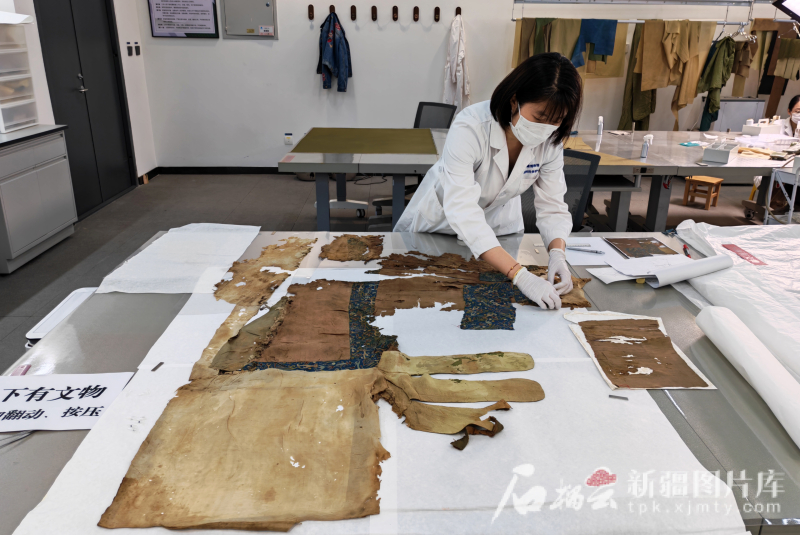
Photo taken on May 12, 2025 shows Ma Yezhen, head of the textile group at the Xinjiang Museum's Cultural Relics Science and Technology Conservation Center, studies the form of relics in northwest China's Xinjiang Uygur Autonomous Region. (Photo by Shiliuyun-Xinjiang Daily/Qin Meihua)
"This piece being restored is a yellow damask embroidered cotton garment excavated in 1959 from Tomb M1 at the Niya Ruins in Minfeng County, Hotan Prefecture, northwest China's Xinjiang Uygur Autonomous Region. It belonged to the tomb's occupant," explained Ma Yezhen, head of the textile conservation team, as she carefully peeled back a protective layer of Xuan paper covering the artifact. "A single relic's restoration, from planning and testing to documentation and final treatment, can take months or even more than a year to complete."
Ancient textiles, with their intricate designs, rich colors, and sophisticated techniques, form an invaluable part of China's cultural heritage. However, prolonged burial often leaves these fabrics fragmented, faded, creased, or moth-eaten. Many arrive at the conservation lab in such deteriorated condition that their original state is barely recognizable before treatment begins.
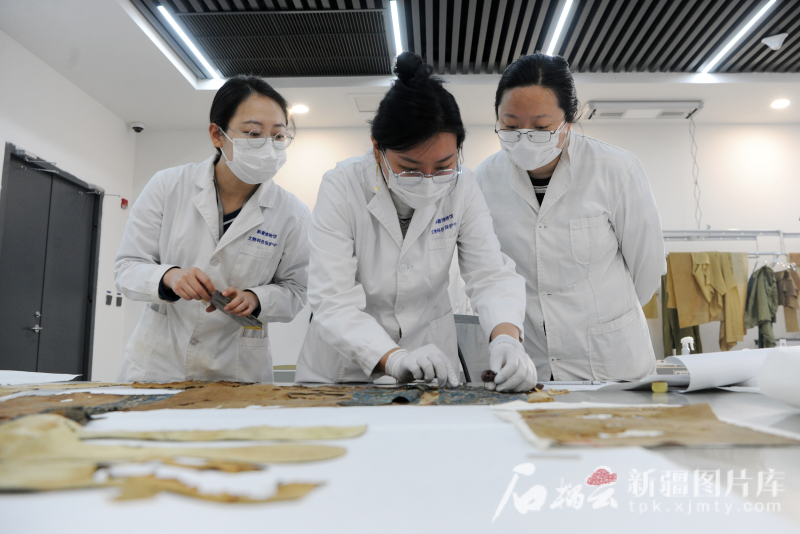
Photo taken on May 12, 2025 shows staff members at the textile cultural relics protection and restoration room of the Xinjiang Museum's Cultural Relics Science and Technology Conservation Center discuss a restoration plan for cultural relics in northwest China's Xinjiang Uygur Autonomous Region. (Photo by Shiliuyun-Xinjiang Daily/Qin Meihua)
According to Ma Yezhen, the team thoroughly studied the artifact's construction before beginning restoration, carefully analyzing its tailoring, assembly, materials, and embroidery patterns through repeated experiments. "Most excavated textiles survive in fragments. A piece that looks like a complete garment might retain only 50 percent or less of its original form. We reconstruct the design by examining surviving fabric contours and stitch alignment," she said.
Treating highly fragile textiles requires extreme caution. Conservators delicately remove dirt using micro-suction tools, akin to handling a newborn. Post-cleaning, the textile is stabilized on a flat workspace with magnetic holders, while missing sections are reinforced with custom-cut backing fabric.
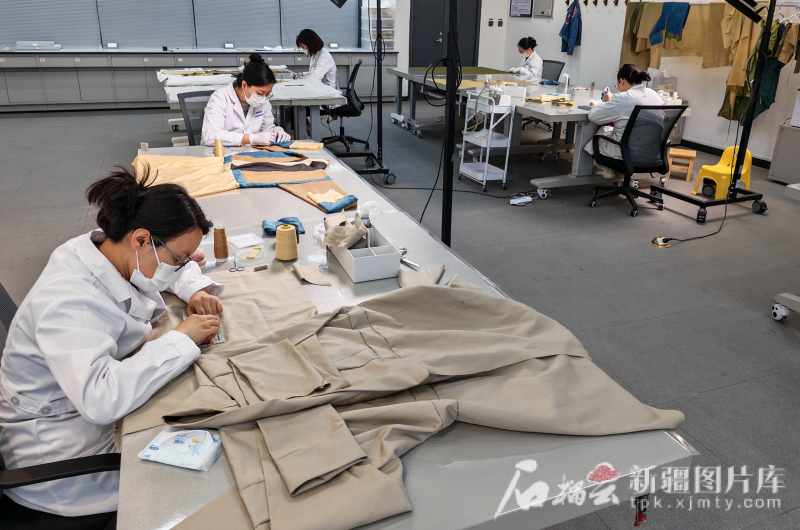
Photo taken on May 12, 2025 shows staff members at the textile cultural relics protection and restoration room of the Xinjiang Museum's Cultural Relics Science and Technology Conservation Center restore cultural relics in northwest China's Xinjiang Uygur Autonomous Region. (Photo by Shiliuyun-Xinjiang Daily/Qin Meihua)
"During the flatten process, we meticulously align the fabric's warp and weft threads to achieve perfect perpendicularity, always working with deliberate care. The backing fabric must match the original in material, thickness, weave density, and color," explained Ma Yezhen. The dyeing process demands exceptional precision. Countless small swatches are test-dyed and color-corrected before the final fabric is treated. A single textile restoration often requires a week just to perfect the dye samples.
On the worktable lay a fully restored yellow short-sleeved woman's jacket, whose year-long conservation was now complete. Unearthed alongside the embroidered damask robe currently being treated, this piece now showcases flawless form and refined beauty, its historical seams virtually undetectable.
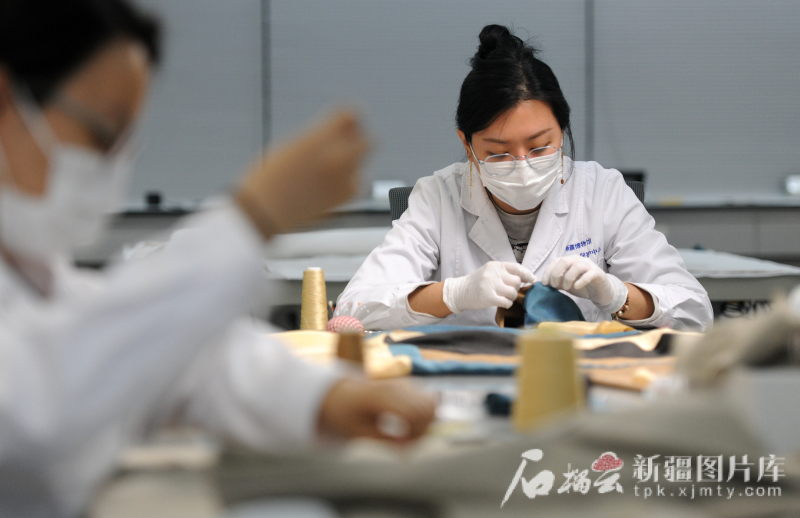
Photo taken on May 12, 2025 shows Jia Shuhan (right), a cultural relics restorer at the Xinjiang Museum's Cultural Relics Science and Technology Conservation Center, stitch a replica in northwest China's Xinjiang Uygur Autonomous Region. (Photo by Shiliuyun-Xinjiang Daily/Qin Meihua)
Jia Shuhan meticulously stitched an artifact replica nearby, as Dilnigar Anwar practiced needlework with equal concentration. Mastering textile conservation demands years of disciplined training, beginning with foundational stitching drills that require every conservator's unwavering dedication. "The most essential quality of a conservator is the ability to work with patience and take responsibility for every artifact they handle," said Ma Yezhen.
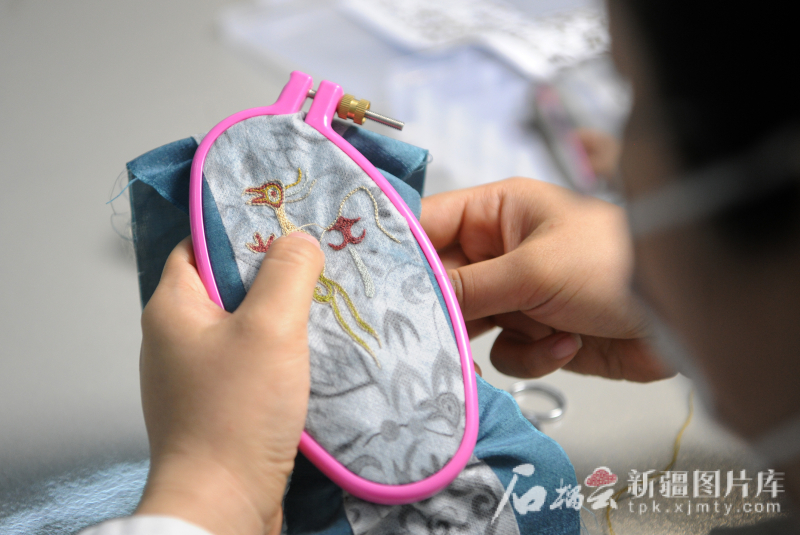
Photo taken on May 12, 2025 shows Liu Tian, a cultural relics restorer at the Xinjiang Museum's Cultural Relics Science and Technology Conservation Center, studies embroidery techniques in northwest China's Xinjiang Uygur Autonomous Region. (Photo by Shiliuyun-Xinjiang Daily/Qin Meihua)
With 15 years in the field, Ma Yezhen's team has restored more than 400 artifacts, earning professional acclaim for their textile conservation methods. Their groundbreaking work on the Kashi Museum's textile collection was named among China's "2021 National Top Ten Cultural Relics Restoration Project."
"These irreplaceable relics are vessels of history. It's a point of pride to make millennia-old artifacts 'come alive' through our hands," Ma Yezhen said.
(A written permission shall be obtained for reprinting, excerpting, copying and mirroring of the contents published on this website. Unauthorized aforementioned act shall be deemed an infringement, of which the actor shall be held accountable under the law.)









